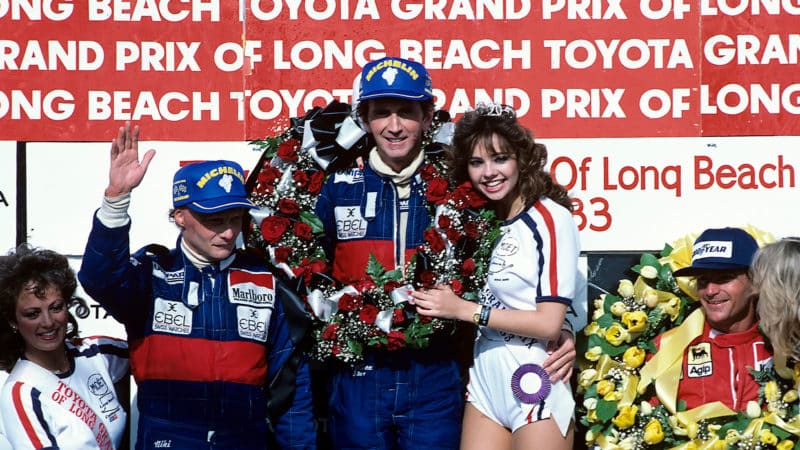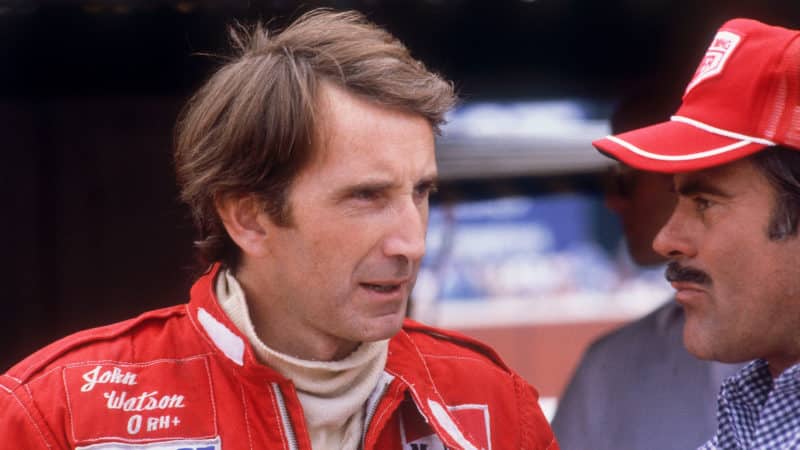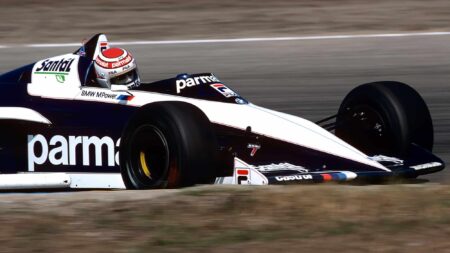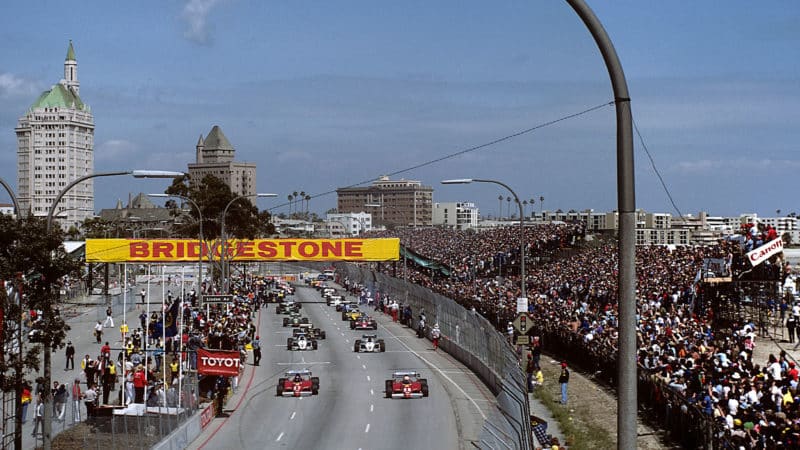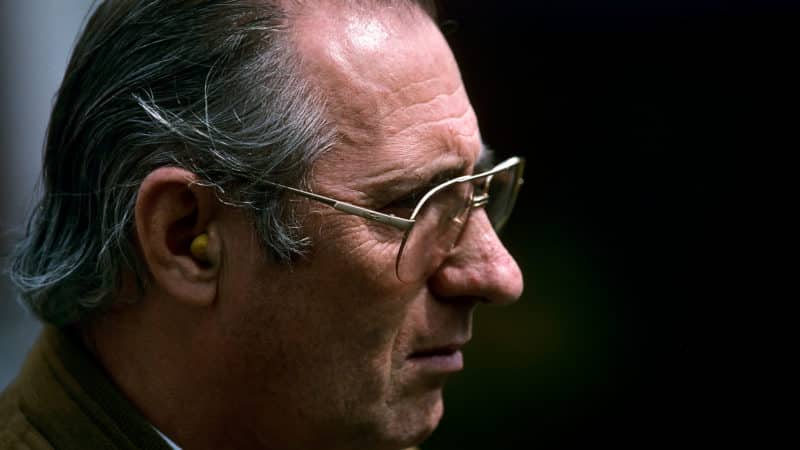At least over a qualifying lap, performance suddenly became an uphill struggle for McLaren. Not having the sheer turbo force to brutally coax its tyres to life on a single outlap, the Woking cars were left circulating on dead rubber.
The scale of this new problem became apparent to Watson when he first drove the rapidly revised MP4/1C at practice for the Brazilian GP.
“You thought ‘****ing hell, this has got no grip!’”
“It was a bit of a wake-up call because all of a sudden you thought ‘****ing hell, this has got no grip!’” he says.
Team-mate Lauda would qualify eighth, 1.5sec off Keke Rosberg’s pole time, while Watson was a further second back – and 16th.
However, what McLaren was losing in the early season’s qualifying session, it would make up for on grand prix Sundays – due to the MP4/1C being something of a Michelin whisperer.
“As it turned out, particularly in Rio, that actually was a really lovely race car,” Watson says.
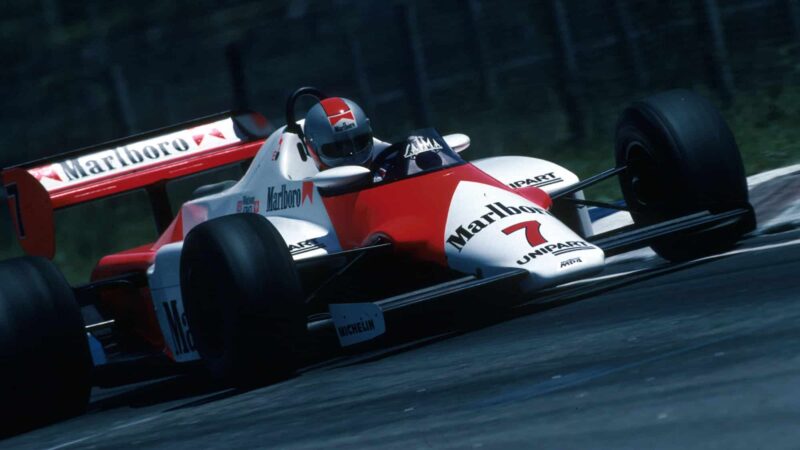
Watson flew at Brazil ’83 – a good omen for Long Beach
Getty Images
“The problem we had was to get the core of the tyre working in the correct temperature window. But in the race [with the McLaren being kinder to its tyres] we flew.”
In Rio — a foretaste of Long Beach — Watson saw off five cars on lap one and was second halfway through the race when his engine let go.
